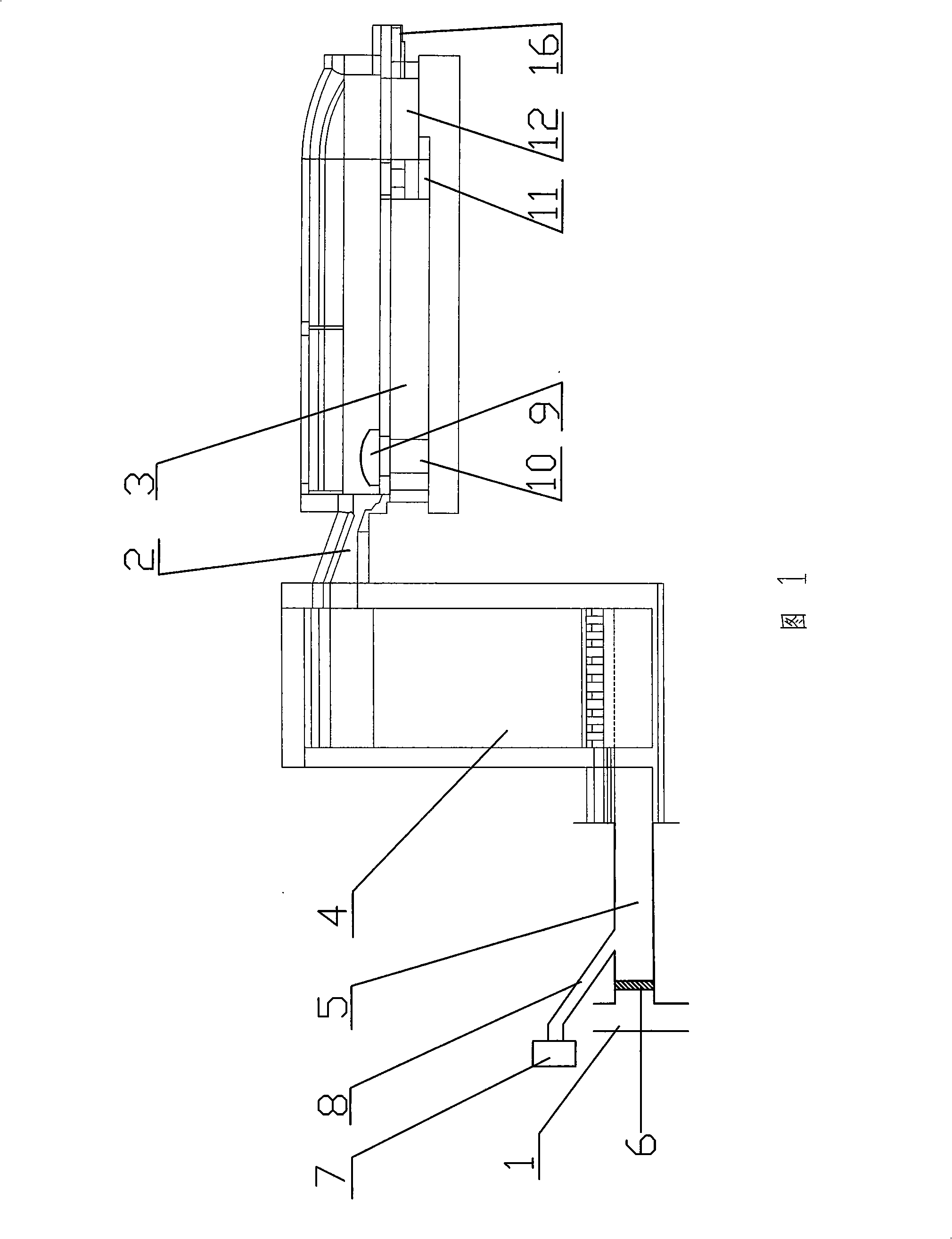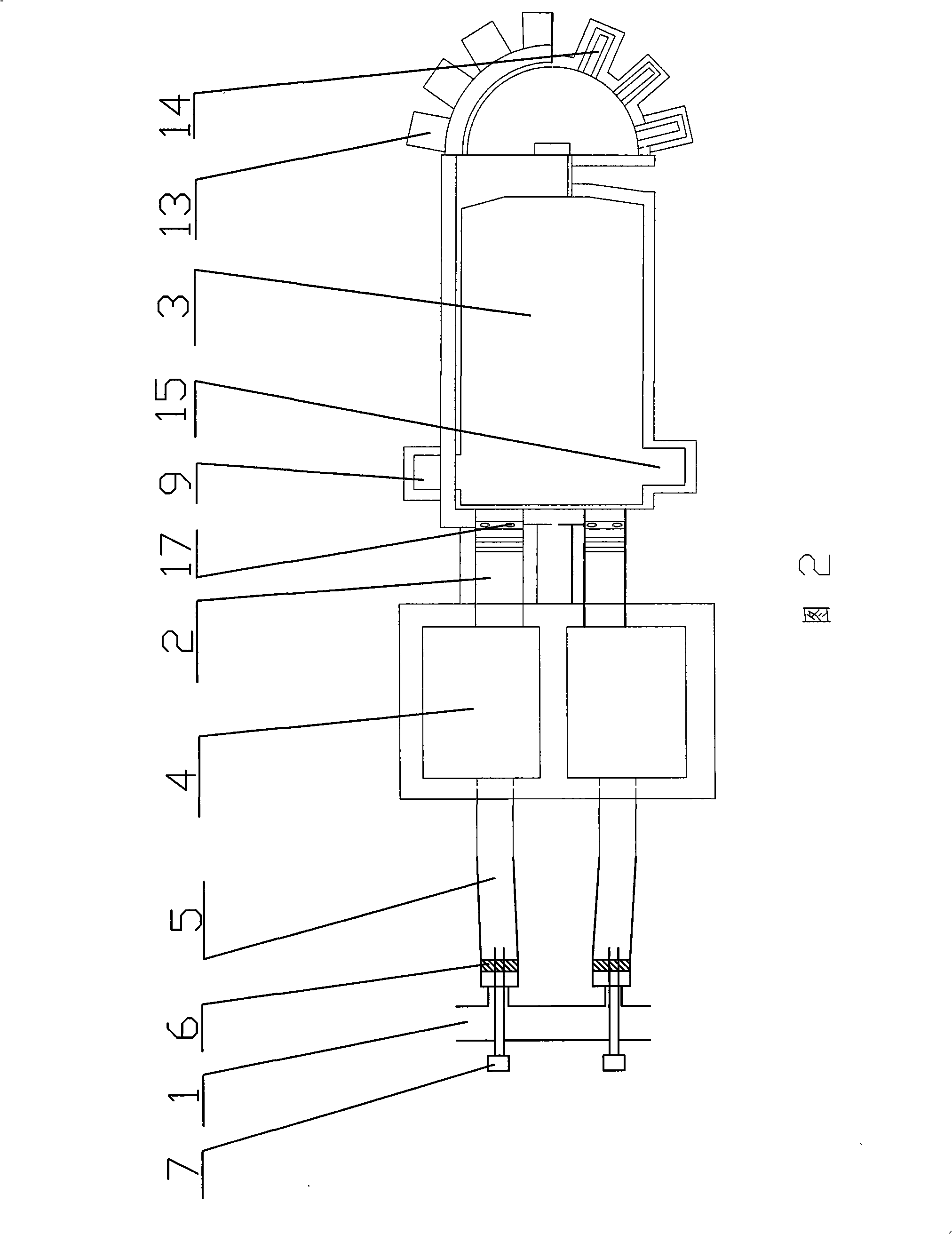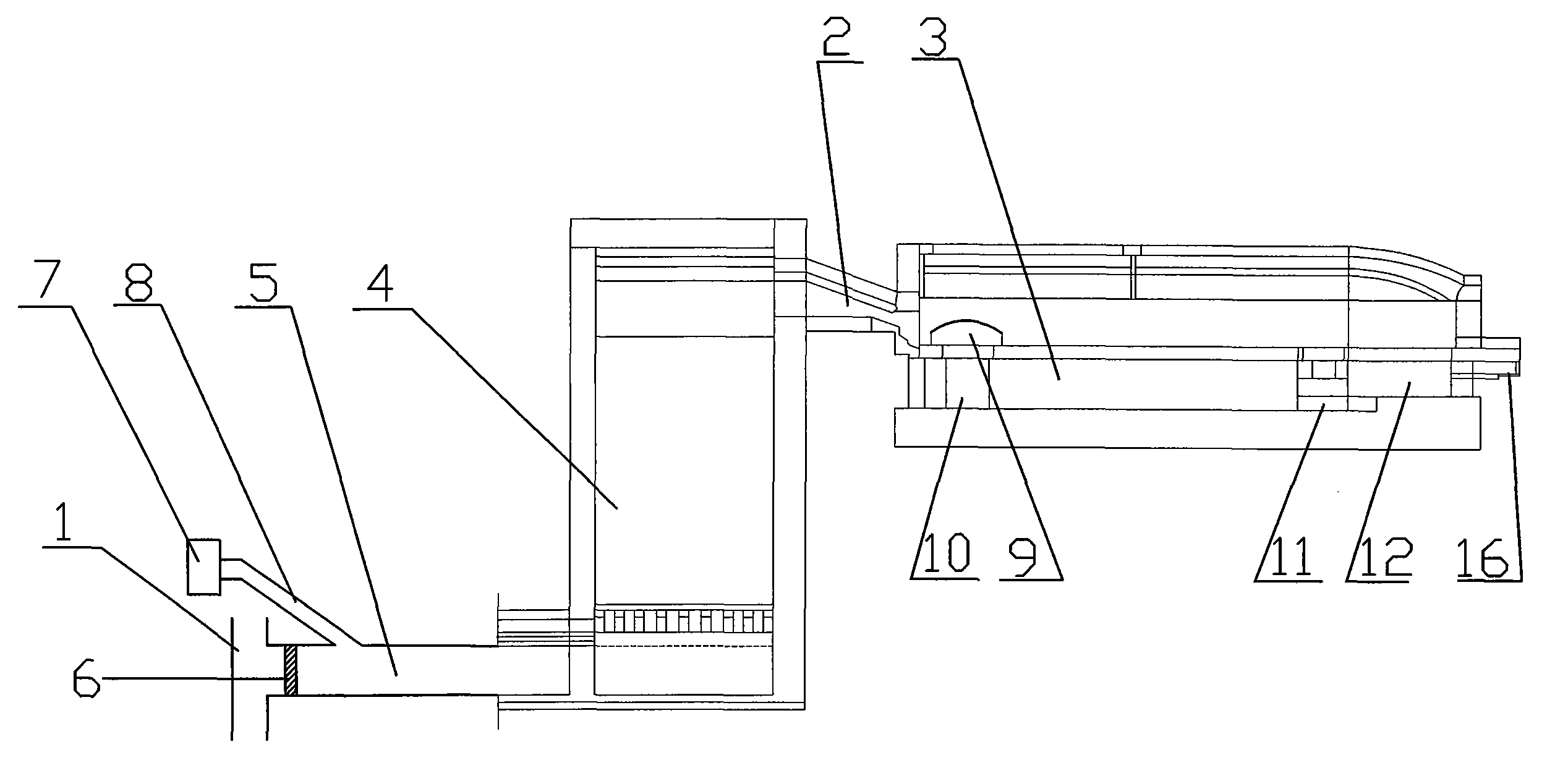Production formula for alkali-resistant glass marble, production method and production kiln thereof
A production method and technology of glass balls, applied in glass production, glass molding, glass furnace equipment, etc., can solve problems such as short melting time, increased cost, and environmental pollution
- Summary
- Abstract
- Description
- Claims
- Application Information
AI Technical Summary
Problems solved by technology
Method used
Image
Examples
Embodiment 1
[0066] A production formula for alkali-resistant glass spheres, the raw materials of which include quartz sand, zircon sand, fluorite, potassium nitrate, soda ash, rutile, calcite and slaked lime clinker, according to the standard weight (100kg) of the finished glass sphere, On the premise of calculating the loss on ignition, the weight ratio of each component is: 35% of quartz sand, 33% of zircon sand, 3% of fluorite, 2% of potassium nitrate, 30% of soda ash, 4.5% of rutile, and 10% of calcite. The loss on ignition (Loss on ignition, abbreviated as LOI), also known as loss on ignition, refers to the crystallization water discharged during the sintering process of the billet, the CO decomposed from the carbonate 2 , SO decomposed from sulfate 2 , and the loss of volume after the removal of organic impurities. Relatively speaking, if the ignition loss is large and the flux content is too much, the shrinkage rate of the fired product is higher. The alkali-resistant quartz sand...
Embodiment 2
[0068] A production formula for alkali-resistant glass spheres, the raw materials of which include quartz sand, zircon sand, fluorite, potassium nitrate, soda ash, rutile, calcite and slaked lime clinker, according to the standard weight (100kg) of the finished glass sphere, On the premise of calculating the loss on ignition, the weight ratio of each component is: quartz sand 39%, zircon sand 34%, fluorite 4%, potassium nitrate 4%, soda ash 45%, rutile 4.5%, calcite 15% . The loss on ignition (Loss on ignition, abbreviated as LOI), also known as loss on ignition, refers to the crystallization water discharged during the sintering process of the billet, the CO decomposed from the carbonate 2 , SO decomposed from sulfate 2 , and the loss of volume after the removal of organic impurities. Relatively speaking, if the ignition loss is large and the flux content is too much, the shrinkage rate of the fired product is higher. The alkali-resistant quartz sand is SiO 2 Quartz sand ...
Embodiment 3
[0070] A production formula for alkali-resistant glass balls, raw materials include quartz sand, zircon sand, fluorite, potassium nitrate, soda ash, rutile, calcite and slaked lime clinker, according to the standard weight (100kg) of the glass ball finished product, in On the premise of calculating the loss on ignition, the weight ratio of each component is: 37% of quartz sand, 36% of zircon sand, 3.6% of fluorite, 3% of potassium nitrate, 40% of soda ash, 4.5% of rutile, and 13% of calcite; The loss on ignition (Loss on ignition, abbreviated as LOI), also known as loss on ignition, refers to the crystallization water discharged during the sintering process of the billet, the CO decomposed from the carbonate 2 , SO decomposed from sulfate 2 , and the loss of volume after the removal of organic impurities. Relatively speaking, if the ignition loss is large and the flux content is too much, the shrinkage rate of the fired product is higher. The alkali-resistant quartz sand is ...
PUM
| Property | Measurement | Unit |
|---|---|---|
| particle size | aaaaa | aaaaa |
| density | aaaaa | aaaaa |
| diameter | aaaaa | aaaaa |
Abstract
Description
Claims
Application Information
 Login to View More
Login to View More - R&D
- Intellectual Property
- Life Sciences
- Materials
- Tech Scout
- Unparalleled Data Quality
- Higher Quality Content
- 60% Fewer Hallucinations
Browse by: Latest US Patents, China's latest patents, Technical Efficacy Thesaurus, Application Domain, Technology Topic, Popular Technical Reports.
© 2025 PatSnap. All rights reserved.Legal|Privacy policy|Modern Slavery Act Transparency Statement|Sitemap|About US| Contact US: help@patsnap.com



